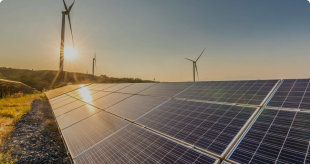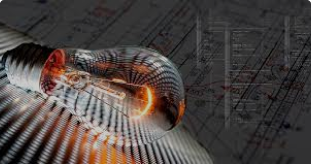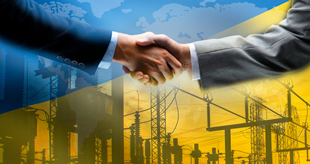The development of hydrogen energy has already become part of European policy in matters of energy transition, climate neutrality, sustainable energy, and enhanced energy security.
The role of hydrogen is also set to grow in connection with Ukraine’s complete phase-out and the European Union’s accelerated phase-out of Russian energy resources.
Hydrogen is expected to transform the economy in four main application areas: transportation, industry, energy, and utilities. This includes the industrial production of hydrogen, its storage, transportation, and electricity supply, clean energy for buildings, as well as heating and cooling.
Ukraine is one of the EU’s priority partners in the emerging hydrogen economy. In 2021, the Ministry of Energy of Ukraine joined the European Clean Hydrogen Alliance. The alliance also includes Energoatom (the National Nuclear Energy Generating Company of Ukraine) and Gas Transmission System Operator of Ukraine (GTSOU).
Ukraine has the necessary capacities for hydrogen production — both for domestic use and for export. This includes carbon-free electricity sources (nuclear and renewable generation) and a well-developed gas transmission system connected to the European Union.
Currently, Ukraine is exploring the potential to produce three types of hydrogen:
Blue hydrogen – from natural gas
Green hydrogen – from renewable energy sources (RES)
Pink hydrogen – from nuclear energy
The two core criteria of Ukraine’s national hydrogen production strategy are:
The carbon footprint across the entire life cycle
Competitive production cost
Ukraine is also studying the possibility of using its national gas transmission system (GTS) for transporting hydrogen to Europe. The repurposing of the GTS and underground storage facilities for hydrogen will enable Ukraine to maintain its role as a key energy transit country in the 21st century.
In November 2023, the European Commission approved the first list of Projects of Common Interest (PCI) and Projects of Mutual Interest (PMI), fully aligned with the goals of the European Green Deal.
These key cross-border infrastructure projects will support the EU in achieving its ambitious energy and climate goals. The projects will benefit from simplified permitting and regulatory procedures, and may also receive EU financial support under the Connecting Europe Facility (CEF) program.
Notably, the Central European Hydrogen Corridor project was included in the list of Projects of Mutual Interest — a route for transporting hydrogen from Ukraine to Slovakia, the Czech Republic, Austria, and Germany (hereinafter referred to as the Hydrogen Corridor Project).
This project plays a crucial role in enabling the future large-scale import of green hydrogen from Ukraine to the EU, as envisioned in the EU Hydrogen Strategy to 2050, which names Ukraine as one of the key hydrogen import partners.
An additional advantage of the Hydrogen Corridor Project is that it creates new market opportunities for Ukrainian renewable energy producers. Ukraine has significant potential for electricity generation from RES, but a substantial share of this electricity cannot be fed into the grid due to technical limitations. However, it can be used to produce green hydrogen for export to the EU.
The Hydrogen Corridor Project — implemented on the Ukrainian side by the Gas Transmission System Operator of Ukraine (GTSOU) — has the potential to become one of the key alternative energy development projects within Ukraine’s post-war recovery.
In response to updates in European legislation and the strategic documents of EU member states in the hydrogen sector, in January 2024, the Ministry of Energy of Ukraine established an Interdepartmental Working Group to develop a draft Hydrogen Energy Development Strategy of Ukraine until 2050.
The Working Group includes representatives from government agencies, research institutions, state-owned enterprises, industry associations, hydrogen energy experts, and Members of Parliament. As a result of its work, the group developed a Draft Hydrogen Strategy of Ukraine until 2050, which contains up-to-date information on global hydrogen energy trends, hydrogen classifications, and analysis of international legislation. The strategy was developed based on proposals from market participants and research institutions, and includes a detailed implementation plan.
To effectively integrate Ukraine’s national hydrogen market with that of the European Union, the Ministry of Energy will actively support cooperation between Ukrainian businesses and international partners, and will develop the necessary regulatory framework and certification system aligned with European standards.








